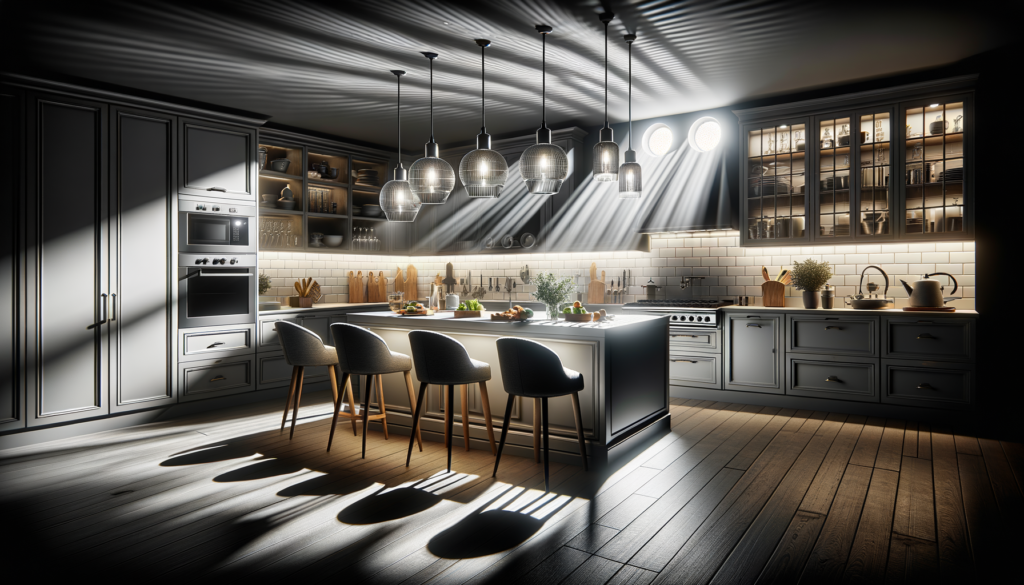The Gaming Blog

Professional Lighting to Enhance Your Kitchen
The Importance of Professional Lighting in the Kitchen
Lighting plays a crucial role in any kitchen, not only for aesthetic purposes but also for functionality. A well-lit kitchen can make cooking and entertaining more enjoyable, while also ensuring safety when handling sharp utensils and hot surfaces. Professional lighting solutions can elevate your kitchen’s ambiance, making it a welcoming space for family and friends. Whether you’re renovating or just looking to update your current setup, understanding the impact of lighting is essential.
Professional lighting can enhance both the atmosphere and efficiency of your kitchen. It offers the ability to highlight architectural features, create a specific mood, and improve the overall functionality of the space. With various lighting options available, from ambient to task lighting, each serves a unique purpose that contributes to the kitchen’s utility and appeal.
Beyond aesthetics, the right lighting can also influence your mood and productivity. Bright, well-positioned lights can reduce eye strain and make tasks like chopping vegetables or reading recipes easier. Additionally, professional lighting can increase the value of your home, as a well-lit kitchen is often a key selling point.
Types of Kitchen Lighting
Understanding the different types of lighting is the first step in designing a well-lit kitchen. Generally, kitchen lighting can be categorized into three main types: ambient, task, and accent lighting.
- Ambient Lighting: This is the main source of light in the kitchen, providing overall illumination. It can be achieved through ceiling-mounted fixtures, recessed lighting, or even large pendant lights. Ambient lighting sets the tone for the entire space and ensures a comfortable level of brightness.
- Task Lighting: As the name suggests, task lighting is focused on specific areas where detailed work is performed, such as countertops, islands, and sinks. Under-cabinet lights are a popular choice for task lighting, as they illuminate work surfaces without casting shadows.
- Accent Lighting: Used to highlight certain features or areas, such as a beautiful backsplash or a collection of decorative items. Accent lighting adds depth and dimension to the kitchen, making it visually interesting.
Combining these types of lighting effectively can transform your kitchen into a versatile and visually appealing space. Each type plays a role in creating a balanced and functional lighting scheme.
Choosing the Right Fixtures
Selecting the appropriate fixtures is crucial in achieving the desired lighting effect in your kitchen. The market offers a wide range of options, from sleek, modern designs to classic, timeless pieces. When choosing fixtures, consider the style of your kitchen, the size of the space, and the type of lighting you need.
For ambient lighting, ceiling-mounted fixtures like chandeliers or flush mounts can provide widespread illumination. Recessed lighting is another excellent choice, offering a clean and unobtrusive look. When it comes to task lighting, under-cabinet lights are highly effective, while pendant lights can add a decorative touch above kitchen islands.
Accent lighting fixtures, such as track lights or wall sconces, can be used to draw attention to specific areas or features in your kitchen. Consider energy-efficient options like LED lights, which offer long-lasting performance and lower energy consumption.
The right fixtures not only enhance the functionality of your kitchen but also contribute to its overall design, making it a space that reflects your personal style.
Energy Efficiency and Smart Lighting Solutions
Incorporating energy-efficient lighting solutions in your kitchen not only benefits the environment but also reduces energy costs. LED lights are a popular choice due to their longevity and low energy consumption. They provide bright, clear light that is ideal for both task and ambient lighting.
Smart lighting solutions are another innovative option for modern kitchens. With smart bulbs and fixtures, you can control the lighting remotely using a smartphone or voice commands. This allows you to adjust brightness, color temperature, and even set schedules for your lights, enhancing convenience and energy efficiency.
Integrating smart lighting systems can also improve the safety and security of your home. For instance, you can program the lights to turn on automatically when you enter the kitchen, or set them to a dim setting during late-night hours to avoid harsh lighting.
By choosing energy-efficient and smart lighting solutions, you can enjoy a well-lit kitchen while also contributing to a more sustainable lifestyle.
Designing a Lighting Plan for Your Kitchen
Creating a comprehensive lighting plan is essential for achieving a harmonious and functional kitchen environment. Begin by assessing the layout and dimensions of your kitchen, as well as the natural light available. This will help you determine the type and number of fixtures needed.
Consider the primary activities that take place in your kitchen, such as cooking, dining, or entertaining, and plan your lighting accordingly. For instance, ensure that task lighting is strategically placed over work areas, while ambient lighting provides sufficient overall illumination.
Incorporate a mix of lighting types to achieve a layered effect, which adds depth and enhances the kitchen’s visual appeal. Don’t forget to include dimmers, which allow you to adjust the lighting intensity to suit different occasions and moods.
A well-thought-out lighting plan not only enhances the kitchen’s functionality but also creates a warm and inviting atmosphere. With careful planning and consideration, you can transform your kitchen into a space that is both beautiful and practical.









